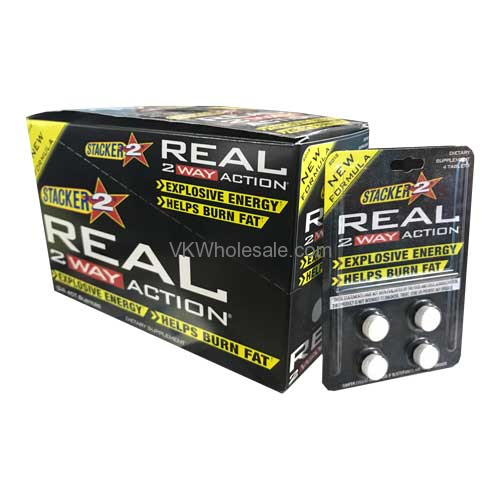Real 2 Way Action
But for two actors to be in a single bed together was, in its own way, a quiet revolution in post–Hays Code Hollywood. Hitchcock knew he needed to supply heat and attraction to motivate the. REAL 2-WAY ACTION SUPPLEMENT. Item # Box: 24 4 Ct Packs. Increase your metabolism and get a burst of explosive energy with REAL 2 Way Action! REAL 2-WAY ACTION SUPPLEMENT. $40.00 per Box: Qty 2-Continue Shopping View.
(a) Real Party in Interest.
(1) Designation in General. An action must be prosecuted in the name of the real party in interest. The following may sue in their own names without joining the person for whose benefit the action is brought:
(A) an executor;
(B) an administrator;
(C) a guardian;
(D) a bailee;
(E) a trustee of an express trust;
(F) a party with whom or in whose name a contract has been made for another's benefit; and
(G) a party authorized by statute.
(2) Action in the Name of the United States for Another's Use or Benefit. When a federal statute so provides, an action for another's use or benefit must be brought in the name of the United States.
(3) Joinder of the Real Party in Interest. The court may not dismiss an action for failure to prosecute in the name of the real party in interest until, after an objection, a reasonable time has been allowed for the real party in interest to ratify, join, or be substituted into the action. After ratification, joinder, or substitution, the action proceeds as if it had been originally commenced by the real party in interest.
(b) Capacity to Sue or Be Sued. Capacity to sue or be sued is determined as follows:
(1) for an individual who is not acting in a representative capacity, by the law of the individual's domicile;
(2) for a corporation, by the law under which it was organized; and
(3) for all other parties, by the law of the state where the court is located, except that:

(A) a partnership or other unincorporated association with no such capacity under that state's law may sue or be sued in its common name to enforce a substantive right existing under the United States Constitution or laws; and
(B) 28 U.S.C. §§754 and 959(a) govern the capacity of a receiver appointed by a United States court to sue or be sued in a United States court.
(c) Minor or Incompetent Person.
(1) With a Representative. The following representatives may sue or defend on behalf of a minor or an incompetent person:
(A) a general guardian;
(B) a committee;
(C) a conservator; or
(D) a like fiduciary.
(2) Without a Representative. A minor or an incompetent person who does not have a duly appointed representative may sue by a next friend or by a guardian ad litem. The court must appoint a guardian ad litem—or issue another appropriate order—to protect a minor or incompetent person who is unrepresented in an action.

(d) Public Officer's Title and Name. A public officer who sues or is sued in an official capacity may be designated by official title rather than by name, but the court may order that the officer's name be added.
Stacker 2 Real 2 Way Action Caffeine Content
Notes
(As amended Dec. 27, 1946, eff. Mar. 19, 1948; Dec. 29, 1948, eff. Oct. 20, 1949; Feb. 28, 1966, eff. July 1, 1966; Mar. 2, 1987, eff. Aug. 1, 1987; Apr. 25, 1988, eff. Aug. 1, 1988; Pub. L. 100–690, title VII, §7049, Nov. 18, 1988, 102 Stat. 4401; Apr. 30, 2007, eff. Dec. 1, 2007.)
Notes of Advisory Committee on Rules—1937
Note to Subdivision (a). The real party in interest provision, except for the last clause which is new, is taken verbatim from [former] Equity Rule 37 (Parties Generally—Intervention), except that the word “expressly” has been omitted. For similar provisions see N.Y.C.P.A. (1937) §210; Wyo.Rev.Stat.Ann. (1931) §§89–501, 89–502, 89–503; English Rules Under the Judicature Act (The Annual Practice, 1937) O. 16, r. 8. See also Equity Rule 41 (Suit to Execute Trusts of Will—Heir as Party). For examples of statutes of the United States providing particularly for an action for the use or benefit of another in the name of the United States, see U.S.C., [former] Title 40, §270b (Suit by persons furnishing labor and material for work on public building contracts * * * may sue on a payment bond, “in the name of the United States for the use of the person suing”) [now 40 U.S.C. §3133(b), (c)]; and U.S.C., Title 25, §201 (Penalties under laws relating to Indians—how recovered). Compare U.S.C., Title 26, [former] §1645(c) (Suits for penalties, fines, and forfeitures, under this title, where not otherwise provided for, to be in name of United States).
Note to Subdivision (b). For capacity see generally Clark and Moore, A New Federal Civil Procedure—II. Pleadings and Parties, 44 Yale L.J. 1291, 1312–1317 (1935) and specifically Coppedge v. Clinton, 72 F.(2d) 531 (C.C.A.10th, 1934) (natural person); David Lupton's Sons Co. v. Automobile Club of America, 225 U.S. 489 (1912) (corporation); Puerto Rico v. Russell & Co., 288 U.S. 476 (1933) (unincorporated ass'n.); United Mine Workers of America v. Coronado Coal Co., 259 U.S. 344 (1922) (federal substantive right enforced against unincorporated association by suit against the association in its common name without naming all its members as parties). This rule follows the existing law as to such associations, as declared in the case last cited above. Compare Moffat Tunnel League v. United States, 289 U.S. 113 (1933). See note to Rule 23, clause (1).
Note to Subdivision (c). The provision for infants and incompetent persons is substantially [former] Equity Rule 70 (Suits by or Against Incompetents) with slight additions. Compare the more detailed English provisions, English Rules Under the Judicature Act (The Annual Practice, 1937) O. 16, r.r. 16–21.

Notes of Advisory Committee on Rules—1946 Amendment
The new matter [in subdivision (b)] makes clear the controlling character of Rule 66 regarding suits by or against a federal receiver in a federal court.
Notes of Advisory Committee on Rules—1948 Amendment
Since the statute states the capacity of a federal receiver to sue or be sued, a repetitive statement in the rule is confusing and undesirable.
Notes of Advisory Committee on Rules—1966 Amendment
The minor change in the text of the rule is designed to make it clear that the specific instances enumerated are not exceptions to, but illustrations of, the rule. These illustrations, of course, carry no negative implication to the effect that there are not other instances of recognition as the real party in interest of one whose standing as such may be in doubt. The enumeration is simply of cases in which there might be substantial doubt as to the issue but for the specific enumeration. There are other potentially arguable cases that are not excluded by the enumeration. For example, the enumeration states that the promisee in a contract for the benefit of a third party may sue as real party in interest; it does not say, because it is obvious, that the third-party beneficiary may sue (when the applicable law gives him that right.)
The rule adds to the illustrative list of real parties in interest a bailee—meaning, of course, a bailee suing on behalf of the bailor with respect to the property bailed. (When the possessor of property other than the owner sues for an invasion of the possessory interest he is the real party in interest.) The word “bailee” is added primarily to preserve the admiralty practice whereby the owner of a vessel as bailee of the cargo, or the master of the vessel as bailee of both vessel and cargo, sues for damage to either property interest or both. But there is no reason to limit such a provision to maritime situations. The owner of a warehouse in which household furniture is stored is equally entitled to sue on behalf of the numerous owners of the furniture stored. Cf. Gulf Oil Corp. v. Gilbert, 330 U.S. 501 (1947).
The provision that no action shall be dismissed on the ground that it is not prosecuted in the name of the real party in interest until a reasonable time has been allowed, after the objection has been raised, for ratification, substitution, etc., is added simply in the interests of justice. In its origin the rule concerning the real party in interest was permissive in purpose: it was designed to allow an assignee to sue in his own name. That having been accomplished, the modern function of the rule in its negative aspect is simply to protect the defendant against a subsequent action by the party actually entitled to recover, and to insure generally that the judgment will have its proper effect as res judicata.
This provision keeps pace with the law as it is actually developing. Modern decisions are inclined to be lenient when an honest mistake has been made in choosing the party in whose name the action is to be filed—in both maritime and nonmaritime cases. See Levinson v. Deupree, 345 U.S. 648 (1953); Link Aviation, Inc. v. Downs, 325 F.2d 613 (D.C.Cir. 1963). The provision should not be misunderstood or distorted. It is intended to prevent forfeiture when determination of the proper party to sue is difficult or when an understandable mistake has been made. It does not mean, for example, that, following an airplane crash in which all aboard were killed, an action may be filed in the name of John Doe (a fictitious person), as personal representative of Richard Roe (another fictitious person), in the hope that at a later time the attorney filing the action may substitute the real name of the real personal representative of a real victim, and have the benefit of suspension of the limitation period. It does not even mean, when an action is filed by the personal representative of John Smith, of Buffalo, in the good faith belief that he was aboard the flight, that upon discovery that Smith is alive and well, having missed the fatal flight, the representative of James Brown, of San Francisco, an actual victim, can be substituted to take advantage of the suspension of the limitation period. It is, in cases of this sort, intended to insure against forfeiture and injustice—in short, to codify in broad terms the salutary principle of Levinson v. Deupree, 345 U.S. 648 (1953), and Link Aviation, Inc. v. Downs, 325 F.2d 613 (D.C.Cir. 1963).
Notes of Advisory Committee on Rules—1987 Amendment
The amendments are technical. No substantive change is intended.
Notes of Advisory Committee on Rules—1988 Amendment
The amendment is technical. No substantive change is intended.
Committee Notes on Rules—2007 Amendment
The language of Rule 17 has been amended as part of the general restyling of the Civil Rules to make them more easily understood and to make style and terminology consistent throughout the rules. These changes are intended to be stylistic only.
Stacker Real 2 Way Action
Rule 17(d) incorporates the provisions of former Rule 25(d)(2), which fit better with Rule 17.
Real 2 Way Action
Amendment by Public Law
1988 —Subd. (a). Pub. L. 100–690, which directed amendment of subd. (a) by striking “with him”, could not be executed because of the intervening amendment by the Court by order dated Apr. 25, 1988, eff. Aug. 1, 1988.